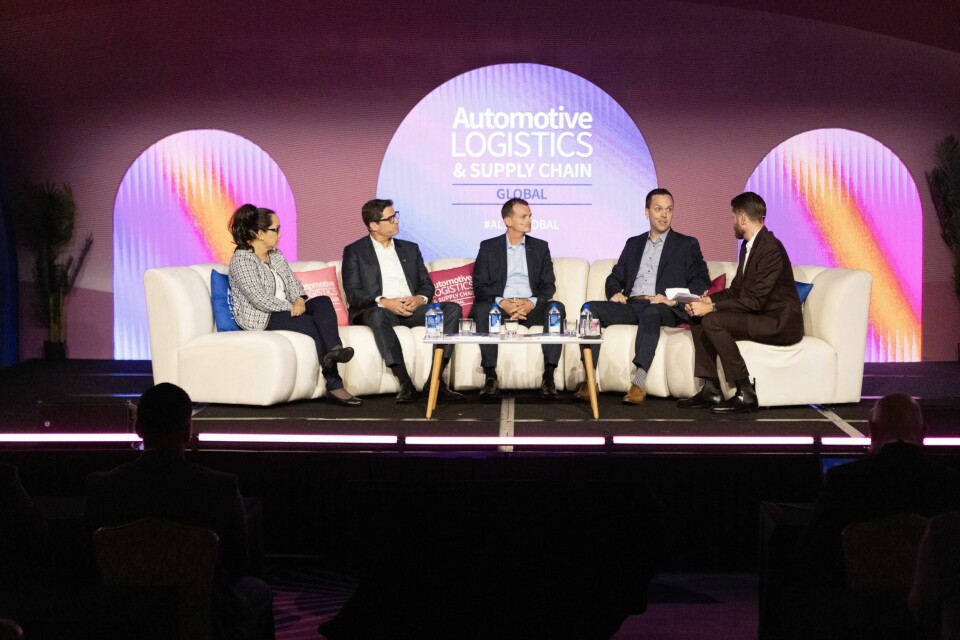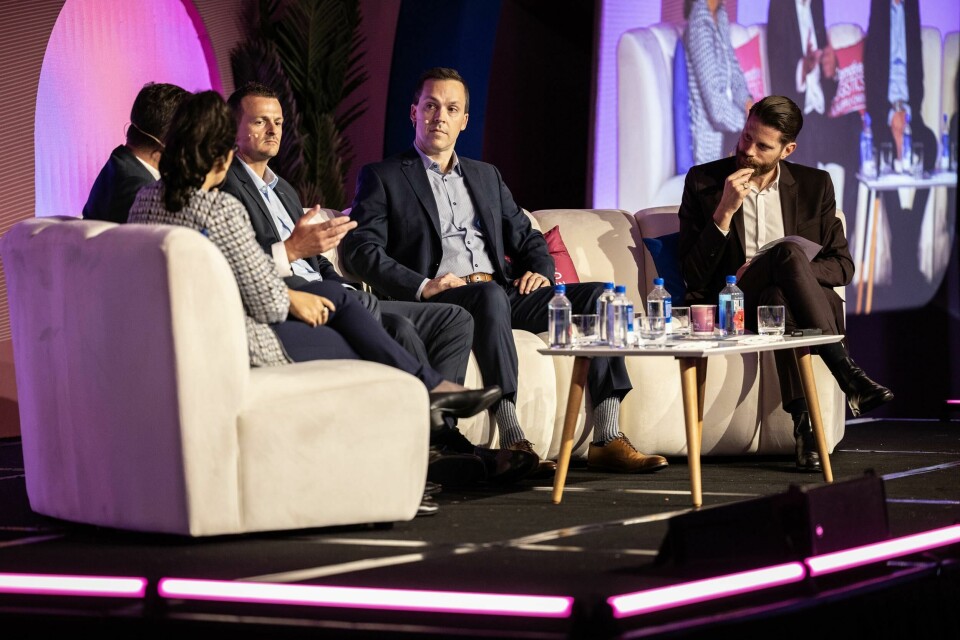
Stellantis, GKN Automotive partner with logistics providers to mitigate disruption
At Automotive Logistics & Supply Chain Global, logistics leaders from Stellantis and GKN Automotive shared they are partnering with providers and suppliers to de-risk the supply chain.
The North American supply chain network continues to face challenges and require constant mitigation, whether from natural disasters, logistics capacity constraints and port strikes, to technology and market transformation. Inreasingly, logistics leaders at major carmakers and suppliers are putting partnership across the supply chain at the heart of their response strategies.
For example, at Automotive Logistics & Supply Chain Global 2024, Mercedes Figueroa, vice-president of Logistics, Stellantis North America told delegates how the OEM is partnering with logistics providers and collaborating internally to be more proactive in enabling resiliency in the supply chain. “We try to stay very close to our service providers, and what helps is that new service providers have new opportunities,” she said. “Communication with service providers is key.”

Stellantis’ strategy over the past few years has been to build more resilience in the supply chain by aligning purchasing and logistics, anticipating risk, improving supplier relations and influencing the design of the supply chain, something the OEM’s chief purchasing and supply chain officer Maxime Picat explained to Automotive Logistics earlier in the year.
As a result of expanding on this strategy, Figueroa told delegates at ALSC Global 2024 that the OEM is able to have proactive communication with service providers before a supply chain crisis.
Aligning internal teams with external partnerships
While Figueroa insists that collaboration with service providers and external partners has “increased drastically”, she said there are still sometimes roadblocks internally, be it in getting support from legal divisions or agreeing on the best ways to communicate and share data.
However, a process that has been present in Stellantis now for the past few years is ensuring that inhouse procurement, engineering and design divisions are involved in early stage collaboration to improve overall logistics.
Figueroa said that during the product development phase, engineering is involved to help maximise the number of parts that can be put on trailers and containers to maximise space utilisation, and these teams also work with service providers at this stage to discuss maximisation of finished vehicles on trailers.
“Procurement is also essential from the beginning, and on solutions like how the supplier base is going to be located,” she said. “It’s important that some suppliers can support several platforms, as then there is more flexibility to react for changes.”
Gabriel Mair, Commodity Procurement director, Transport/Logistics and Capex at GKN Automotive, who was also on the panel at the event, told delegates that it’s a similar situation for tier-1 providers. He said: “We have our internal network design in place who are communicating with the customer what is needed from the packaging side, from the planning side and so on.”
He said there needs to be flexibility end-to-end, across internal teams and external ones, and communication with OEM customers also falls under this. “Our internal experts are in contact on a regular basis [with the OEMs], it’s the same team, so they get input also from the market to understand how we can design this in a more efficient way for our customers,” Mair said.
Enabling proactive communication across the supply chain
Figueroa said that being proactive in communicating with external partners in the supply chain is mutually beneficial – especially if logistics providers are proactive as well.
“If they are also proactive, they can reach out to us, in conjunction with purchasing, and then we can have future opportunities that we can either incorporate into a proper cycle or try and test the service,” she said.
Similarly, logistics providers and tier suppliers who joined Figueroa on stage agreed. Jim Mancini, vice-president, North American Surface Transportation, CH Robinson said that OEM customers are coming to the logistics provider to ask for help in creating solutions for both systemic and unique challenges they face.
“We’re seeing more opportunities there,” he said. “The way I think about it is how we’re leveraging our expertise, how we’re leveraging scale and doing all of that to create a tailored solution for customers, whether that’s a 4PL or whether that’s some sort of hybrid solution. It’s really about centring what our customers need and what unique challenge we’re solving for them.”
And GKN Automotive’s Mair said the tier-1 supplier wants to hear new solutions proactively from partners. He said that since GKN’s core competencies are manufacturing and engineering, it wants expert partners both globally and regionally to reach out with solutions. Combined with the internal GKN team, the external partners allow the firm to have continuous improvement.
“The pandemic was hitting all of us, but it was a big signal for us that we had to adapt our internal strategy. Some years ago we had a kind of extended internal logistics team in place that was managing a high number of logistics partners,” Mair said. “We then decided to further optimise the strategy to rely on external expertise and world leading players who can then help us on the end-to-end supply chain globally. That’s the kind of strategy we have more developed over the last few years.”
Christoph Seitz, global vice-president, Finished Vehicles, DP World said that proactive collaboration has greatly improved in the past two years. “There’s a lot of reach out by OEMs saying, ‘hey we have certain issues and choke points here and there, what can we do together potentially?’,” Seitz said. “And I’ve never seen this level of cooperation with actual data sharing, which is very encouraging and I hope that will last for a long time because it just makes everybody’s life easier.”

Scope for service providers to feed into OEM planning
While OEMs like Stellantis have been bringing in internal divisions to early phase product planning, there is also scope to bring logistics service providers in on these early stages too, said CH Robinson’s Mancini.
“I think there are a lot of examples that that we have, where we were involved early in the engineering phase from not only a costing standpoin but also the feasibility side,” Mancini said. “If you’re having a part made in a certain part of the world, what’s the feasibility of that product getting there reliably on time when you need it. Any time a provider can get involved further upstream it only enhances the reliability and the resiliency of the supply chain.”
DP World’s Seitz added that this is especially prominent in EV start-ups, who he said have reached out to the company in early product phases to understand things like vehicle weights in shipping, range and sleep mode. “Because it’s a new type of vehicle, compared to decades of combustion engines, there’s a need to understand better how the logistics chain affects the vehicle or the other way around,” he said. “There is where I’ve definitely noticed a lot of early-stage collaboration.”






